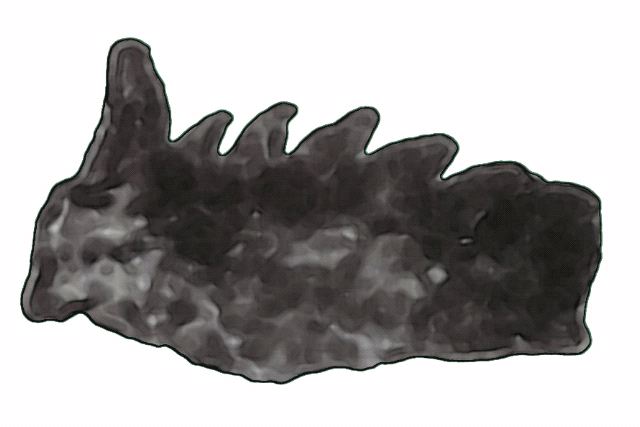Segmented worms
Annelids are an ancient group of sea-dwelling invertebrates that were already plentiful by Cambrian time, and whose origin probably dates back to the end of the Precambrian.
 (24 kb) Annelids comprise the phylum of segmented worms, so-named because their bodies consist of many successive rings. Of this group, the best known are earthworms and leeches. As soft-bodied animals, annelid fossils are exceedingly rare.
(24 kb) Annelids comprise the phylum of segmented worms, so-named because their bodies consist of many successive rings. Of this group, the best known are earthworms and leeches. As soft-bodied animals, annelid fossils are exceedingly rare.
There are many classes of annelids, but one of them, polychaetes, is particularly well-known by paleontologists. This class of “sea worms” comprises more than 10,000 species, and includes many with solid jaws. Moving from side to side, the denticulated hooks lining the mouth of these predators were used to capture and chew their prey. These hard chitinous organs are often preserved in the fossil record.
Small fossilized pieces of polychaete jaws are called scolecodonts, and are typically the only part of the animal to be fossilized. Scolecodonts are only a few millimetres long and display a wide variety of shapes. They are found throughout the Phanerozoic, right up until the present day, and are also common in marine deposits from the Ordovician, Silurian and Devonian periods.
A palynological study revealed a scolecodont in the residue of a dissolved Escuminac Formation sample. The presence of polychaete worms in these sediments indicates the depositional environment had a marine influence.

 (24 kb) Annelids comprise the phylum of segmented worms, so-named because their bodies consist of many successive rings. Of this group, the best known are earthworms and leeches. As soft-bodied animals, annelid fossils are exceedingly rare.
(24 kb) Annelids comprise the phylum of segmented worms, so-named because their bodies consist of many successive rings. Of this group, the best known are earthworms and leeches. As soft-bodied animals, annelid fossils are exceedingly rare.There are many classes of annelids, but one of them, polychaetes, is particularly well-known by paleontologists. This class of “sea worms” comprises more than 10,000 species, and includes many with solid jaws. Moving from side to side, the denticulated hooks lining the mouth of these predators were used to capture and chew their prey. These hard chitinous organs are often preserved in the fossil record.
Small fossilized pieces of polychaete jaws are called scolecodonts, and are typically the only part of the animal to be fossilized. Scolecodonts are only a few millimetres long and display a wide variety of shapes. They are found throughout the Phanerozoic, right up until the present day, and are also common in marine deposits from the Ordovician, Silurian and Devonian periods.
A palynological study revealed a scolecodont in the residue of a dissolved Escuminac Formation sample. The presence of polychaete worms in these sediments indicates the depositional environment had a marine influence.
Site map | Feedback | Links | Sources | Credits
Segmented worms
<< Pterygotus | Trace fossils >>



